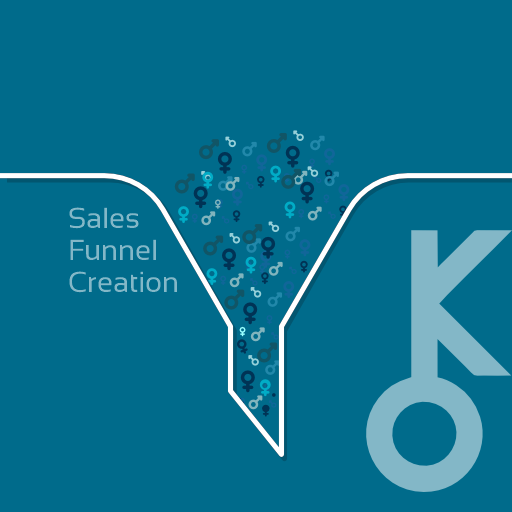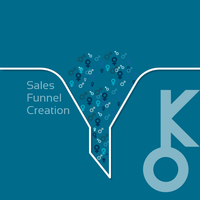Improving Funnel Efficiency

A sales funnel is a crucial component of any business's marketing strategy. It represents the journey that potential customers go through before making a purchase, with the ultimate goal of converting them into paying customers. However, sometimes sales funnels may not perform as efficiently as expected, resulting in suboptimal conversion rates and revenue generation.
This guide provides an extensive overview of how to troubleshoot and improve the efficiency of your sales funnel. By identifying common issues and implementing targeted strategies, you can enhance your funnel's effectiveness and maximize conversions.
1. Identifying Bottlenecks and Drop-off Points
The first step in troubleshooting your sales funnel involves identifying bottlenecks and drop-off points where prospective customers are abandoning the buying process. This can be done by analyzing data from various stages of the funnel, such as website traffic, email open rates, click-through rates, or completed transactions.
- Website Traffic: If there is a significant drop in website traffic at specific pages or steps in your funnel, it indicates potential issues with user experience or messaging.
- Email Open Rates: Low open rates suggest problems with subject lines or sender reputation. Consider split testing different subject lines to improve engagement.
- Click-through Rates: If recipients are not clicking on links within your emails or ads, reevaluate their content and placement for better relevancy.
- Completed Transactions: An increasing number of abandoned carts may indicate difficulties during checkout or concerns about payment security.
2. Optimizing Landing Pages
Landing pages play a critical role in capturing leads' attention and convincing them to take further action. Common troubleshooting areas related to landing pages include:
- Clear Value Propositions: Ensure that your landing page clearly communicates the benefit visitors will receive by taking action.
- Compelling Headlines and Subheadings: Use attention-grabbing headlines to highlight key information and make visitors want to continue reading.
- Concise Forms: Streamline the form on your landing page by asking for only necessary information. Limiting distractions and reducing friction can lead to higher conversion rates.
- Strong Call-to-Action (CTA): Craft a prominent, compelling CTA that clearly tells users what they need to do next.
3. Improving Email Marketing Strategies
Email marketing is an effective way to nurture leads and guide them through the sales funnel. Troubleshooting areas in email marketing include:
- Segmentation: Ensure that you are segmenting your email lists based on relevant criteria such as demographics, behavioral patterns, or purchase history. This allows you to send more personalized and targeted messages.
- Subject Lines: Experiment with different subject lines to improve open rates. Personalization, curiosity-driven statements, or time-sensitive offers can significantly impact engagement levels.
- Content Relevance: Tailor your email content based on the recipient's position within the funnel. Provide value by sharing educational materials or exclusive promotions that align with their needs.
4. Analyzing Funnel Data
Regularly analyzing data from your sales funnel will provide valuable insights into its performance and customer behavior. Key metrics and tools for analysis include:
- Conversion Rate: Measure conversion rates at each stage of the funnel to identify areas where optimization is needed.
- Customer Journey Mapping: Understand how customers progress through each stage of your funnel by creating detailed customer journey maps. Identifying friction points helps design remedies where prospects are most likely to drop off.
- Data Analytics Tools: Utilize analytics software like Google Analytics or CRM platforms providing reports on key metrics like traffic sources, page views, bounce rates, or time spent on site.
5. Continuous Testing and Optimization
Building an efficient sales funnel requires continuous testing, monitoring, and optimization efforts over time:
- A/B Testing (or split testing): Compare two versions of a specific element within your funnel, such as landing page designs, CTAs, email subject lines, or pricing strategies. Analyze the results and implement changes based on which version performs better.
- Conversion Rate Optimization: Make incremental improvements to your sales funnel by using tools like heat mapping to identify areas that need improvement or design innovative approaches to enhance UX.
Implementing these troubleshooting tips and taking a data-driven approach can help you identify weaknesses in your sales funnel and improve its efficiency. Remember that sales funnels are not static, so ongoing monitoring and optimization are essential for sustained success.
Sponsored
Sponsored
Sponsored
Explore More:

The Impact of AI and Machine Learning
As technology continues to advance at a rapid pace, businesses are constantly looking...

Future of Sales Funnels
The future of sales funnels is an exciting and promising concept for businesses...

Lessons Learned from Failed Funnels
In the realm of sales funnel creation, case studies serve as valuable resources...

Successful Sales Funnel Examples
In sales funnel creation, case studies play a crucial role in demonstrating the...

Case Studies in Sales Funnel Creation
In the world of sales and marketing, case studies play a crucial role...

Sales Funnel Recovery Strategies
Sales funnels are a critical component of any successful sales and marketing strategy....

Identifying Funnel Leaks
A sales funnel is a systematic approach to guiding potential customers through a...

Sales Funnel Troubleshooting
Sales funnel troubleshooting is the process of identifying and resolving issues or bottlenecks...

Sales Funnel Tools and Software: Landing Page Builders
Sales funnels are essential in driving conversions and increasing revenue for businesses. To...

Sales Funnel Tools and Software: Email Marketing Tools
Sales funnel tools and software refer to the various technologies and platforms available...

Sales Funnel Tools and Software: CRM Software
Sales funnel tools are software programs or applications designed to help businesses track...

Sales Funnel Tools and Software
A sales funnel is a framework used by businesses to guide potential customers...

Measuring Sales Funnel Performance: Analytics and Reporting
Measuring sales funnel performance analytics and reporting is a crucial aspect of any...

Measuring Sales Funnel Performance: Sales Funnel Metrics
Measuring the performance of your sales funnel is crucial for understanding the effectiveness...

Measuring Sales Funnel Performance: Key Performance Indicators (KPIs)
Measuring the performance of a sales funnel is crucial for any business aiming...

Measuring Sales Funnel Performance
Sales funnel performance measurement is a crucial aspect of any business operation. It...